ssp. sartor (Fabricius, 1787)
Subfamilia: LAMIINAE / Tribus: MONOCHAMINI
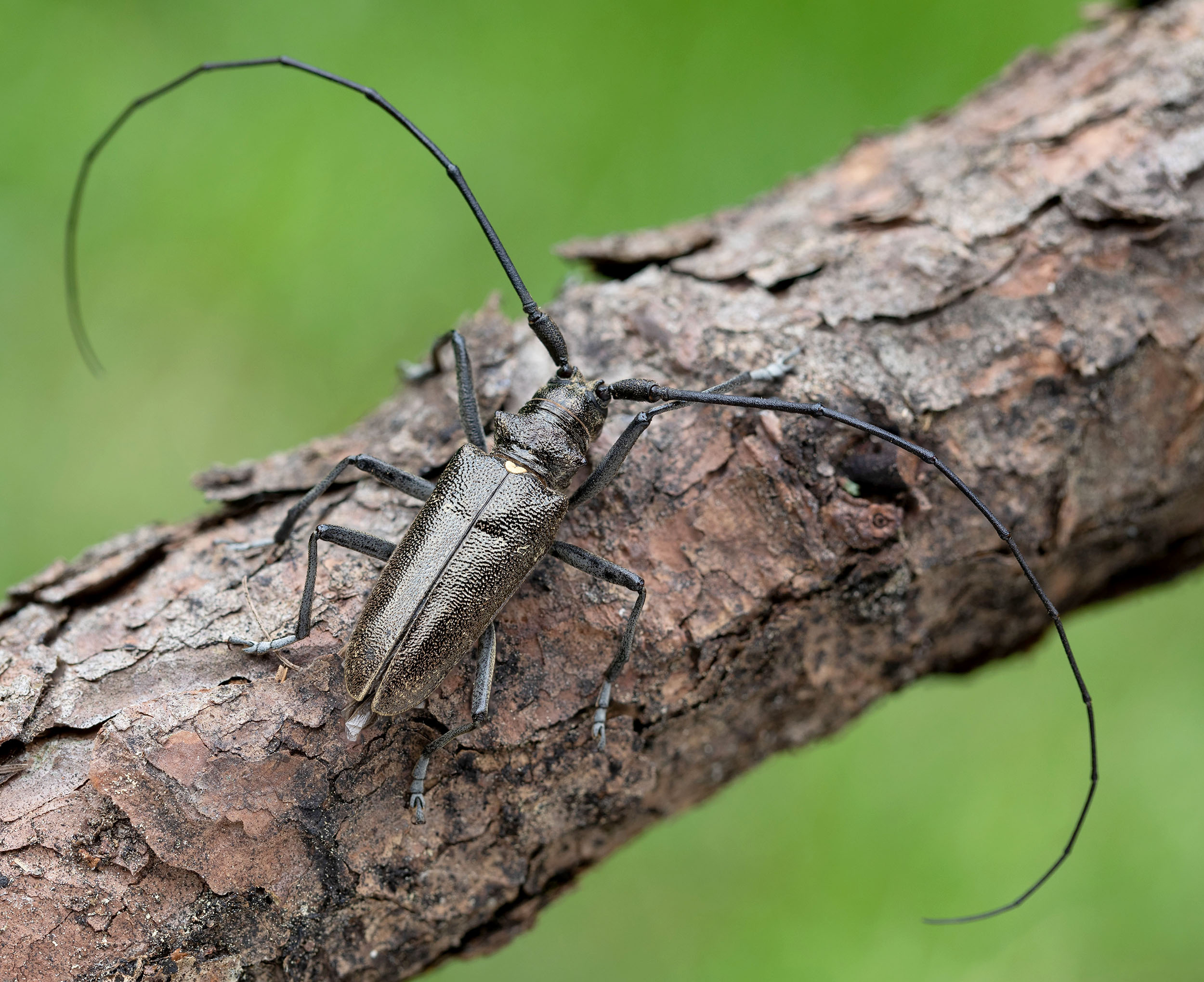
Monochamus sartor ♂ [Photo © Daniel Rydzi]
Monochamus sartor sartor, a large and robust longhorn beetle of the European coniferous forests, has been described from Germany as Lamia sartor by Johann Christian Fabricius in 1787 [☆]. In Central Europe, M. sartor sartor inhabits mainly submontane and montane coniferous forests with the original occurrence of Norway spruce (Picea abies).
Development under the bark and in the wood of branches and tips of weakened, dying or freshly dead, mostly older and very strong trees, often in uprooted or on the ground lying trees. The young larvae feed subcortically, older enter the wood, where they continue in the feeding and create irregular gallery even deep across the infested tree. During feeding, the larvae create a number of long, thick splinters, which they partially throw out through the holes in the bark. If a standing tree is heavily infested, the soil beneath it is covered with a layer of these splinters. Larvae overwinter twice, then pupate in the pupal cells in the wood. The freshly hatched imago leaves the pupal cell via a straight by larva premade exit corridor to the wood surface where it creates a typical circular exit hole (see the M. sartor biology page). Life-cycle usually two years.
Adults, active from late June to early September (with peak in July), can be found sitting on the fresh logs, felled or uprooted trees. Adults perform the maturity feeding on bark of fresh thin twigs [❖].
The authors (MH and MR) observed a number of adults sitting, mating or running briskly on the trunks of massive standing but drying spruces during a warm July day. The beetles occurred mainly on the trunk in the upper part of the standing tree, from a height of about 6-7 m to the top (Slovakia, Demänovská dolina, Low Tatras Mts., Slovakia, July 1993).
Body length: ♂♂ 25.5–34.0 mm / ♀♀ 24.0–28.4 mm Life cycle: 2 years Adults in: June - September Host plant: conifers, preferring (Picea abies, rarely in Pinus or Abies) Distribution: Albania, Austria, Belarus, Bosnia and Herzegovina, Bulgaria, Croatia, Czechia, Estonia, France, Germany, Hungary, Italy, Montenegro, Poland, Romania, Russia, Serbia, Slovakia, Slovenia, Sweden, Switzerland, Ukraine
The depicted beetles were photographed in: ♂♂ - Rohrmoos-Untertal (Liezen district, Styria, Austria) on July 10, 2015 and Uľanka (Bánská Bystrica district, Banská Bystrica region, Slovakia) on July 11, 2020; ♂ - Kláštorisko (Slovak Paradise National Park, Spišská Nová Ves district, Košice Region, Slovakia) on June 19, 2017.Photographed by Daniel Rydzi and M.Hoskovec
[☆]
Fabricius J.Ch.:
Mantissa insectorum sistens eorum species nuper detectas adiectis characteribus genericis, differentiis specificis, emendationibus, observationibus.
Hafniae, Proft 1: xx + 348, 1787. [download].
[❖]
Sláma M.E.F.:
Tesaříkovití – Cerambycidae České republiky a Slovenské republiky / Cerambycidae of the Czech Republic and Slovak Republic.
Milan Sláma private printing, Krhanice, 383pp [pages 279-281], 1998 [ISBN: 80-238-2627-1]. [download]
Wallin H., Schroeder M. and Kvamme T.:
A review of the European species of Monochamus Dejean, 1821 (Coleoptera, Cerambycidae) – with a description of the genitalia characters.
Norwegian Journal of Entomology 60 (1): 11-38, 2013. [download]
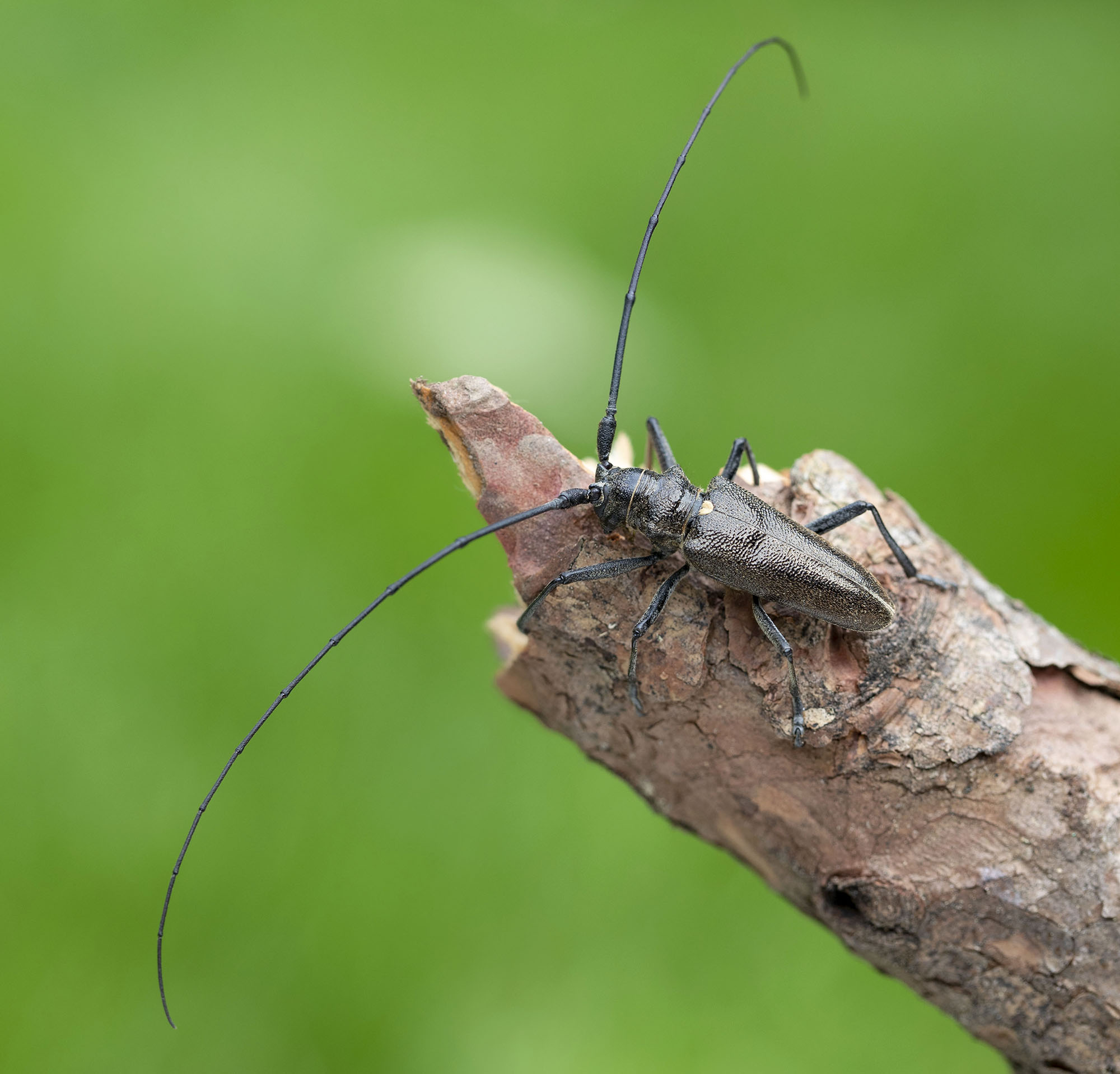
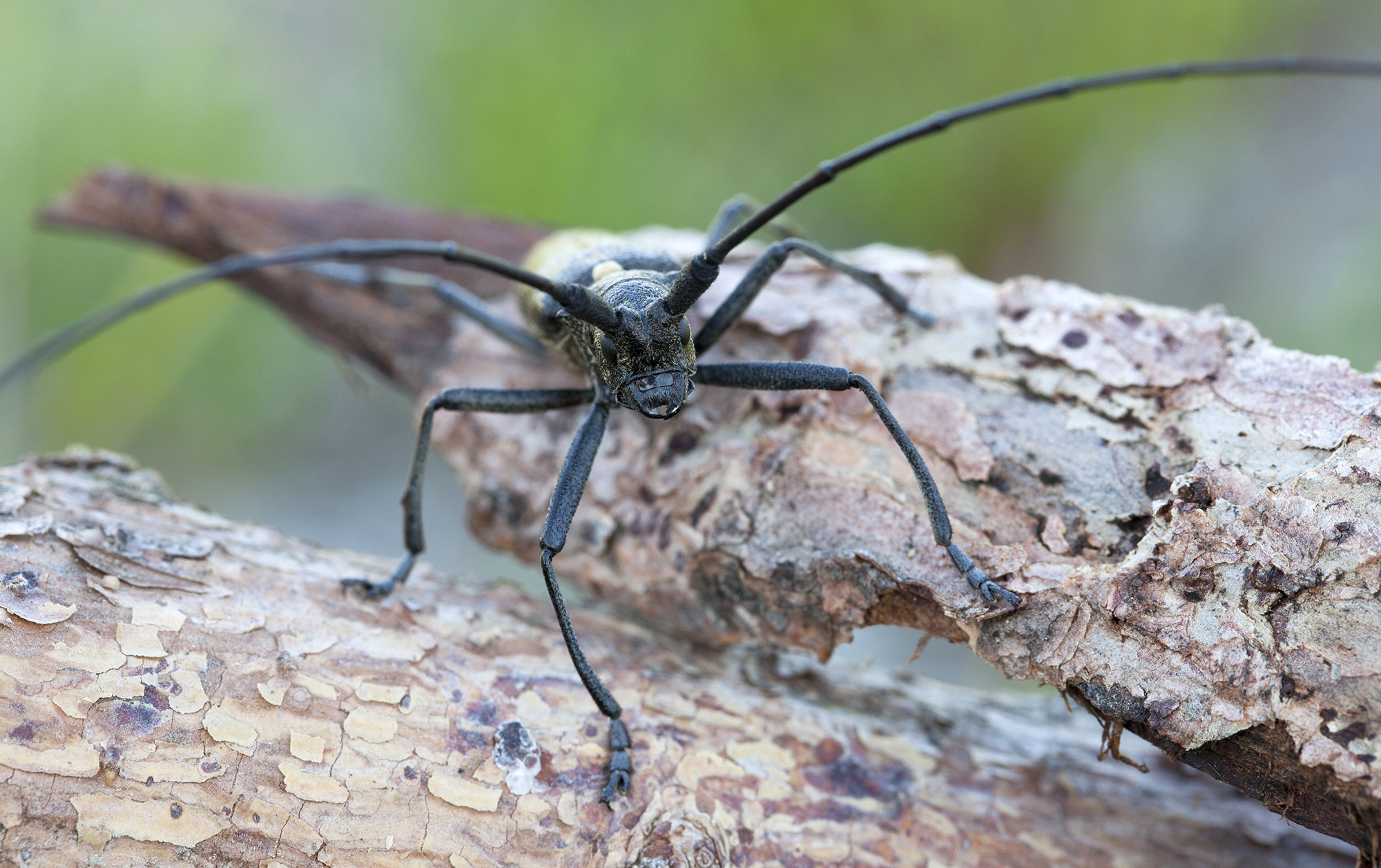
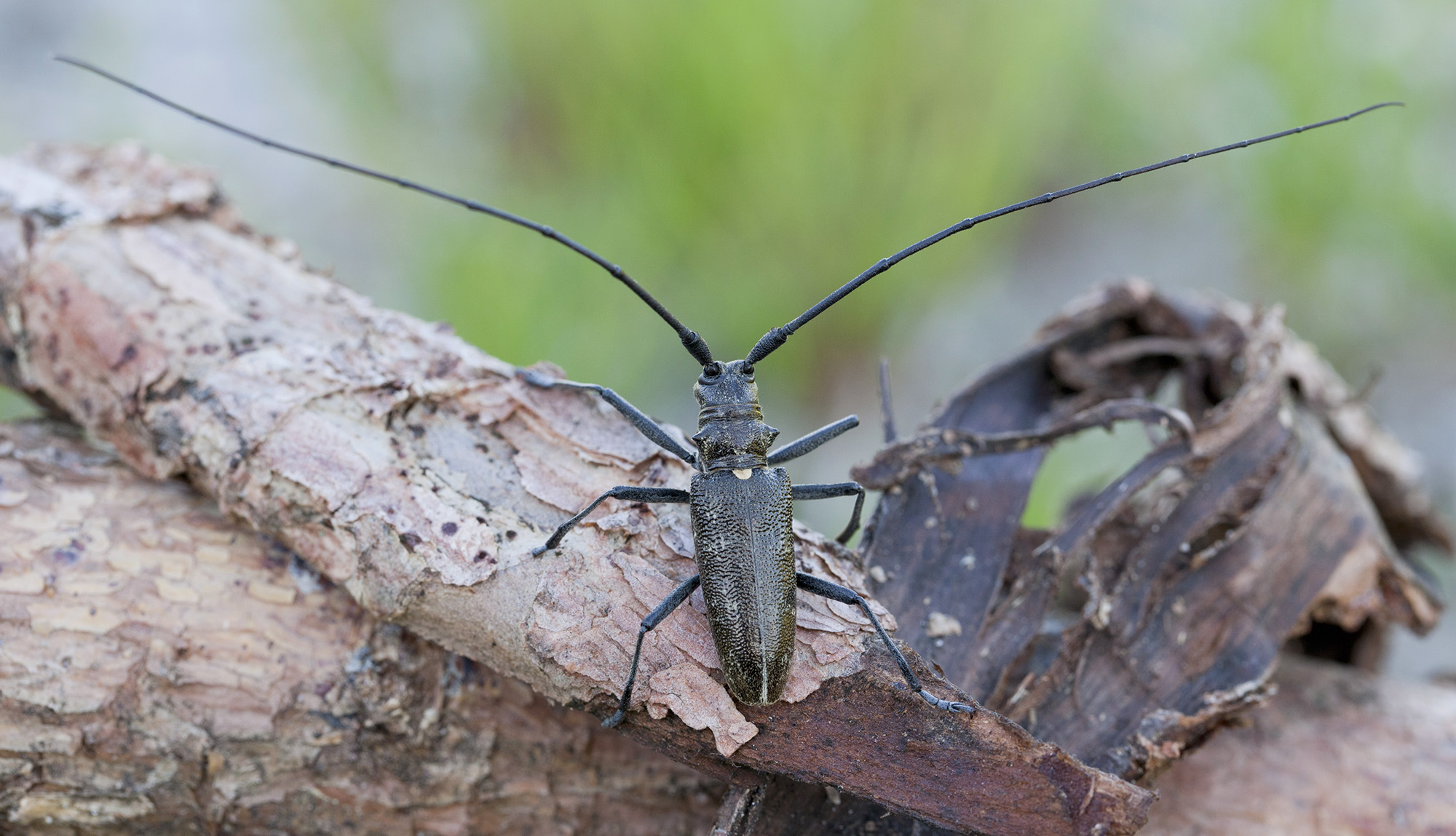
Monochamus sartor ♂ [Photo © Daniel Rydzi]
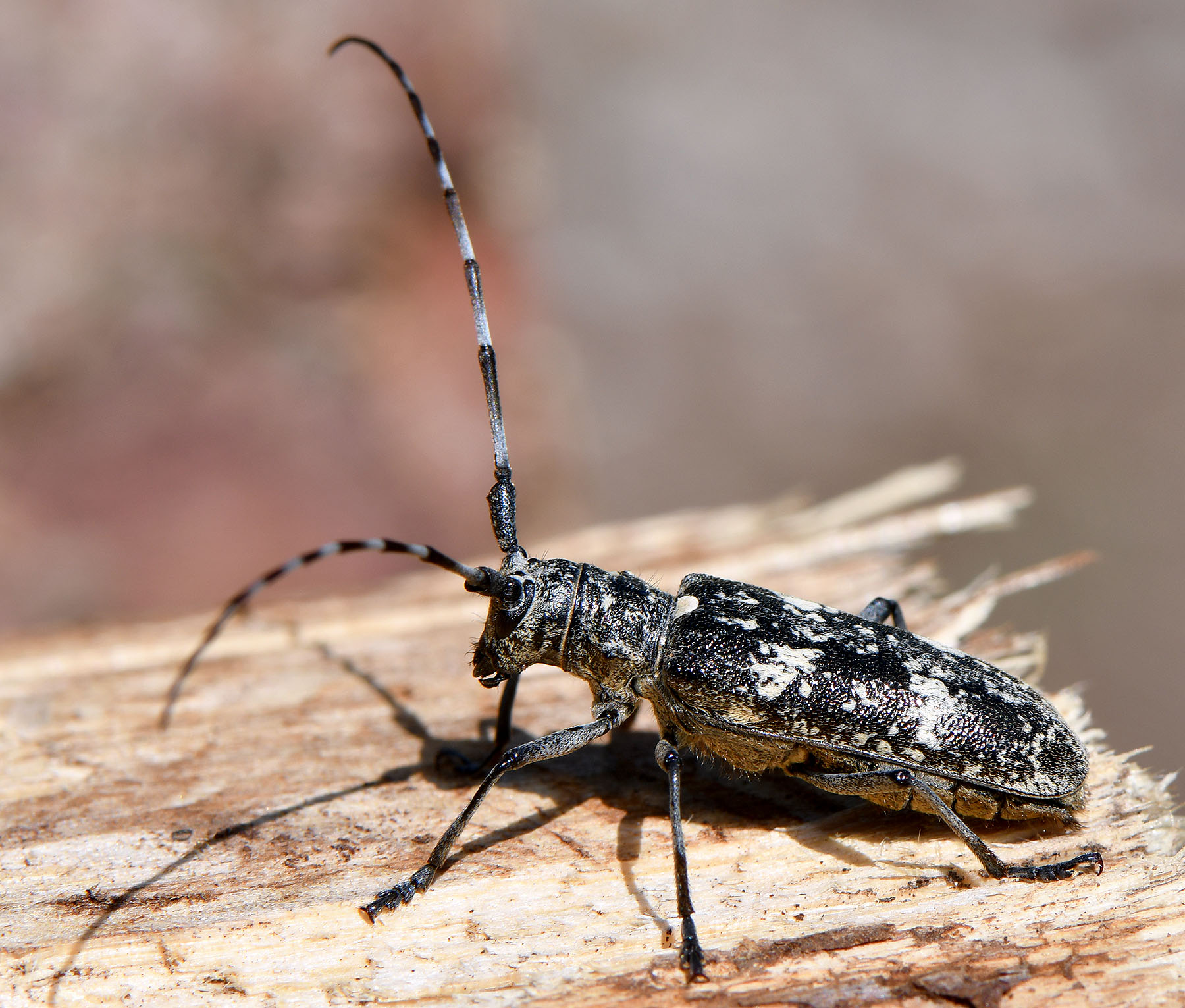
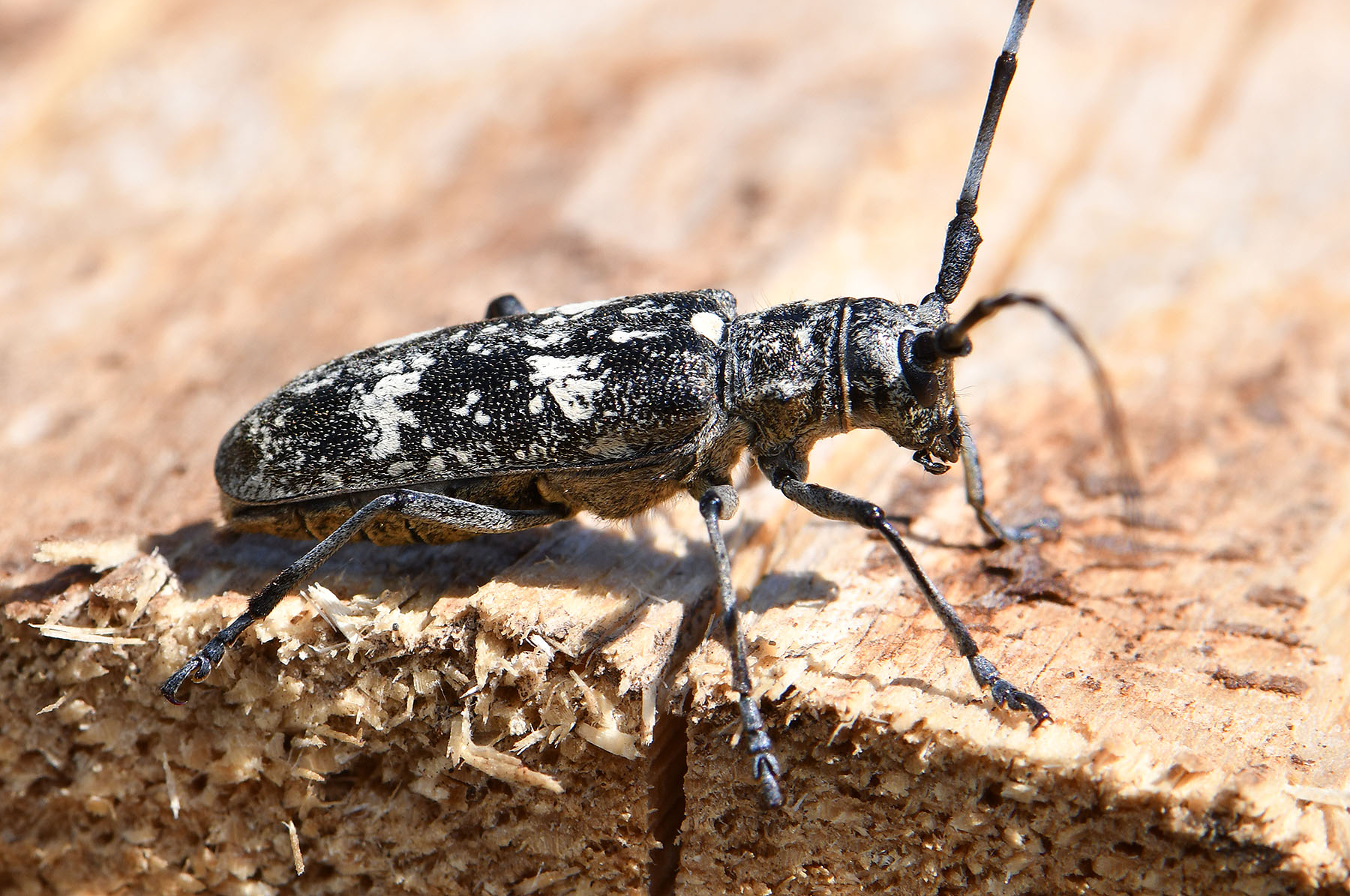
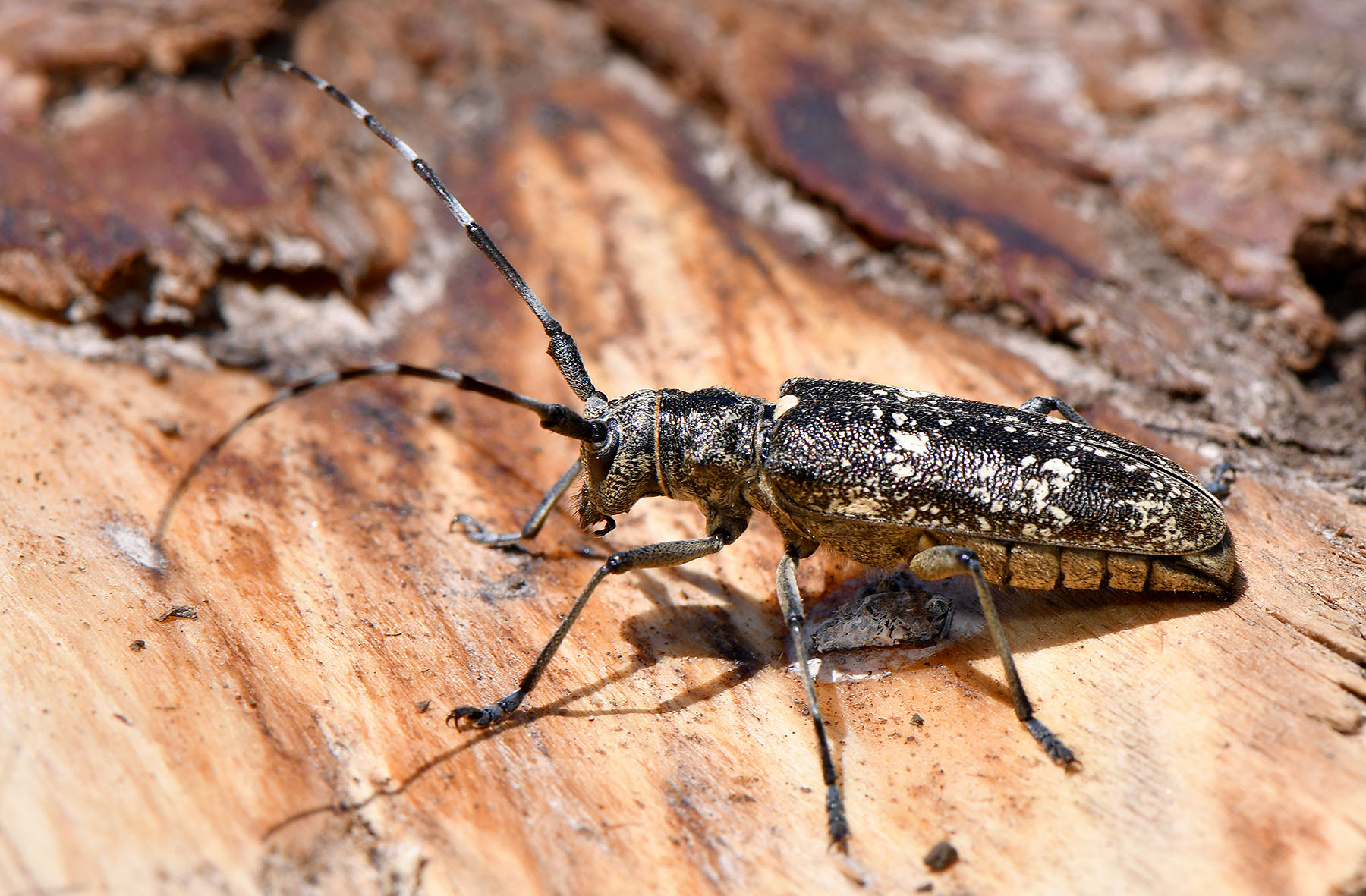
Monochamus sartor ♀ [Photo © Michal Hoskovec]
| Subfamilia | Lamiinae Latreille, 1825 |
| Tribus | Monochamini Gistel, 1848 |
| Genus | Monochamus Dejean, 1821 |
| Subgenus | Monochamus Dejean, 1821 |
| Species | Monochamus (Monochamus) sartor (Fabricius, 1787) |
| Subspecies | Monochamus (Monochamus) sartor sartor (Fabricius, 1787) |
